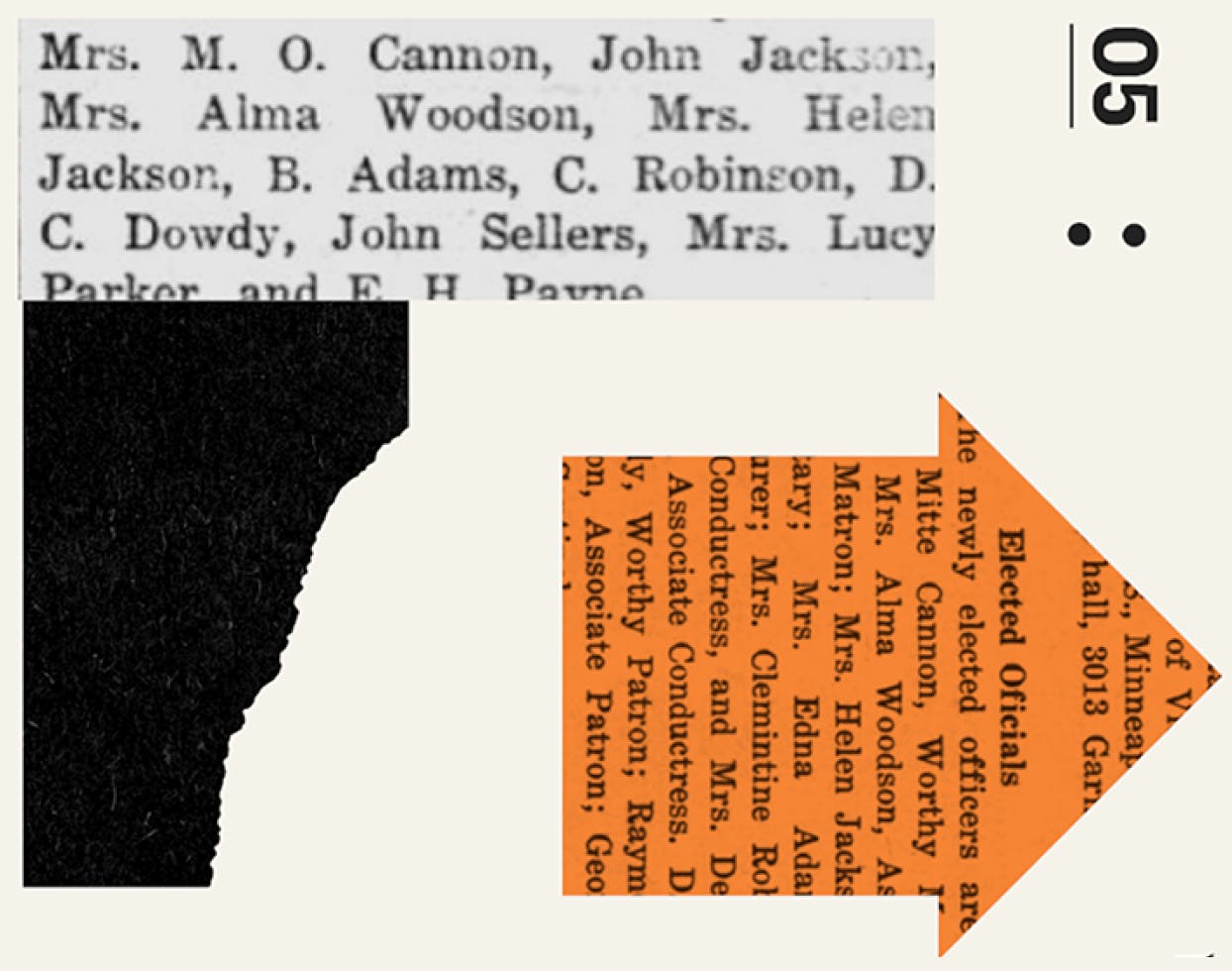

Episode 5:
The Corner
Eric turns to the people who lived alongside Harry and Clementine Robinson to show him what it was like to start over in the new reality of the 1930s. They are outcasts in their own city, but gradually become central figures in what is emerging as the Black middle class community there.
Scroll down to view a guide to this episode, which includes photos, newspaper clippings, public documents and more about the people you hear in the episode.
New episodes are released on Mondays.
Episode 5 Guide

The Minnesota Star Tribune
'Prosperity and Happiness'
This advertisement for Harry Robinson's Little Dixie Sandwich Shop appeared in the Minneapolis Journal on Jan. 1, 1931.
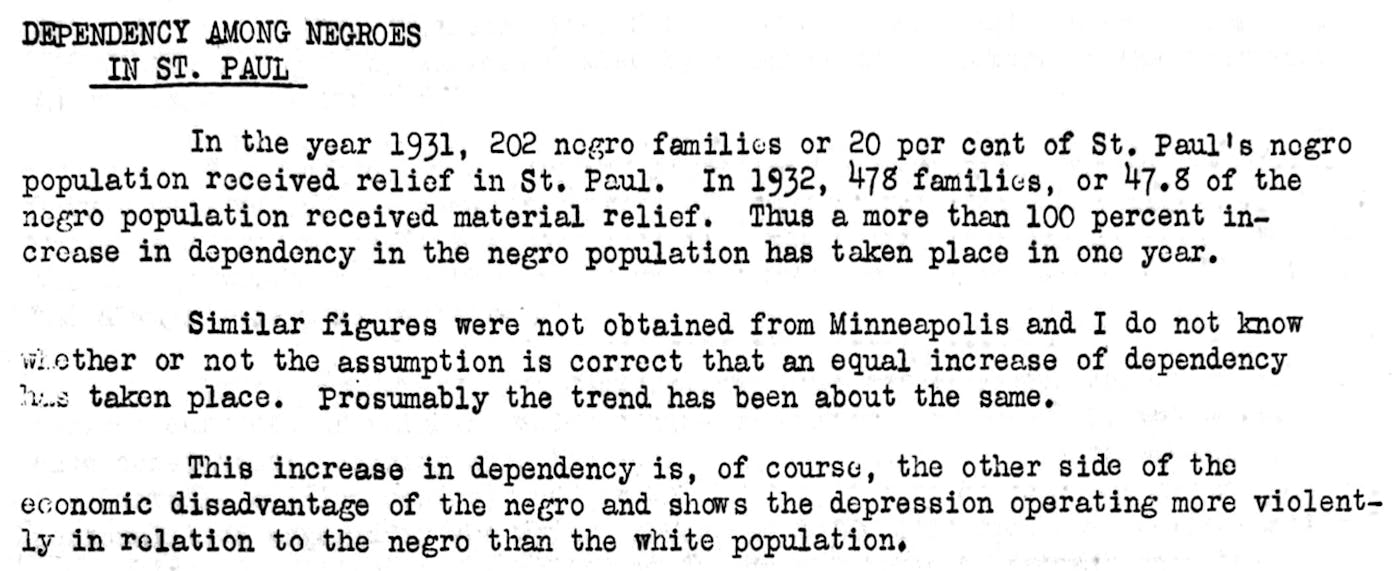
Library of Congress
Depression takes a toll on Black community
Louise Clevenger of the St. Paul Community Chest wrote about the effects of the Depression on the Twin Cities Black community in this 1933 letter summarizing the activities of the local Urban League chapters. She said the Depression was "operating more violently in relation to the negro than the white population."
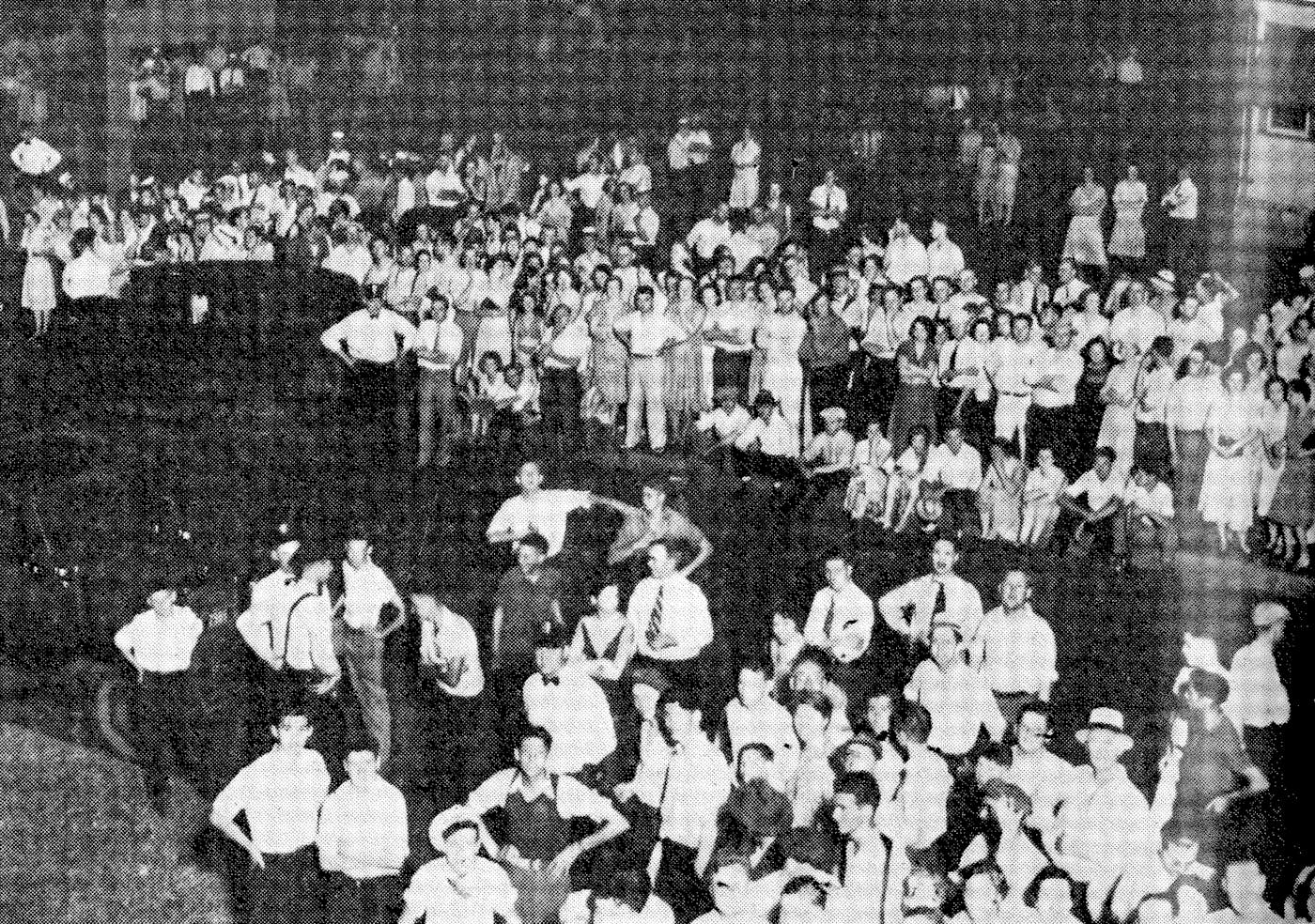
The Minnesota Star Tribune via The Crisis magazine
The Lee house
The violent effort to oust the Lee family from a house on 46th Street and Columbus Avenue in 1931 illustrated how much of the city was off limits to Black families. This image of the crowd outside the Lee house ran in the Minneapolis Tribune on July 17, 1931. It also appeared in the October 1931 issue of the Crisis magazine, published by the NAACP. This scan of the image was made from a bound edition of the Crisis archives.
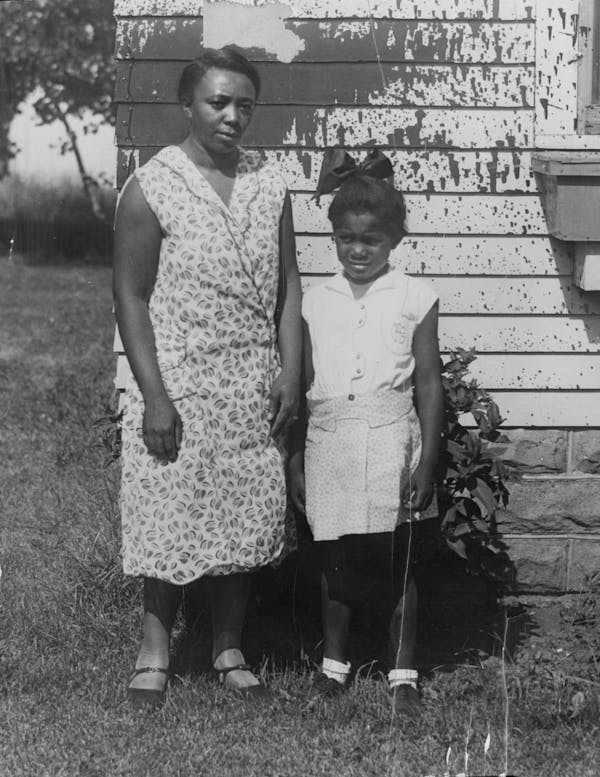
Hennepin County Library
Edith and Mary Lee
Edith and Mary Lee stood outside their house in July 1931. It had been spattered with paint by vandals trying to oust them from the neighborhood.
Hennepin County Library
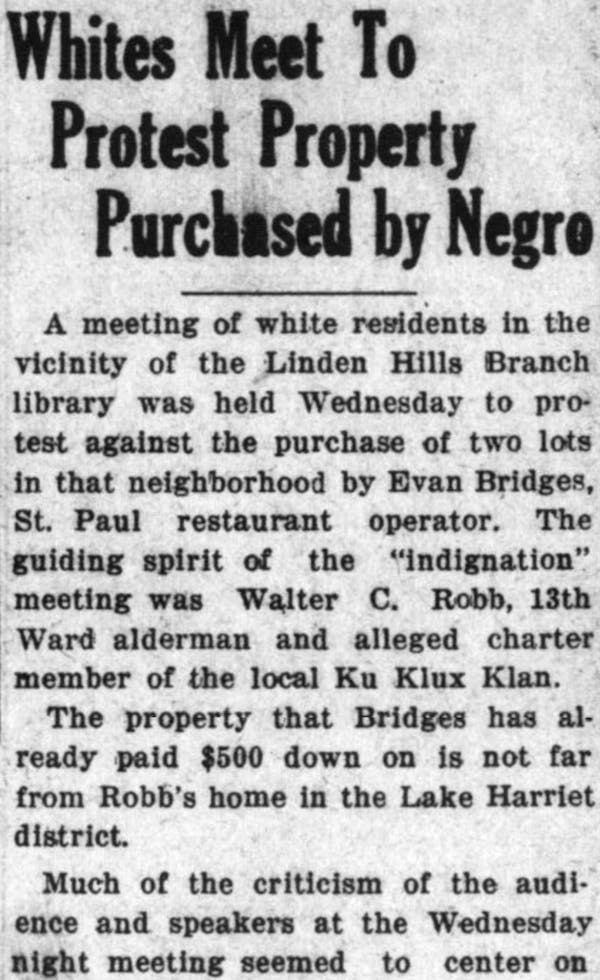
Twin-City Herald via Minnesota Historical Society
Further exclusion in southwest Minneapolis
Efforts to keep Black people from purchasing property in southwest Minneapolis continued in the 1930s. This 1932 article from the Twin-City Herald describes a protest meeting in Linden Hills attempting to keep a Black restaurant owner from buying property there. The article says that the "guiding spirit" of the meeting was Ward 13 Alderman Walter Robb, noting that Robb is an "alleged charter member of the local Ku Klux Klan." About 150 people attended the meeting, the paper reported, though not all of them agreed that the purchaser "would make an undesirable neighbor." Another meeting was held the following year to "make further protest" about the purchase, according to the Herald.
The editor of the Twin-City Herald was Cecil Newman, who in 1934 founded the Minneapolis Spokesman and St. Paul Recorder.
Twin-City Herald via Minnesota Historical Society

Mapping Inequality
Nicollet Improvement Association
Local real estate professionals helped the federal government's Home Owners Loan Corporation develop what is now known as a "redlining" map of Minneapolis in the mid-1930s classifying the lending risk of different parts of the city. This description of a portion of southwest Minneapolis says that it is threatened by a "slow encroachment of negroes" from the east, but the Nicollet Improvement Association is "affording protection against much encroachment."
Moving to the Old Southside
The Robinsons moved in 1934 to an area that was becoming a hub of the city's Black middle class, near 38th Street and 4th Avenue. The integrated neighborhood would become known as the Old Southside.
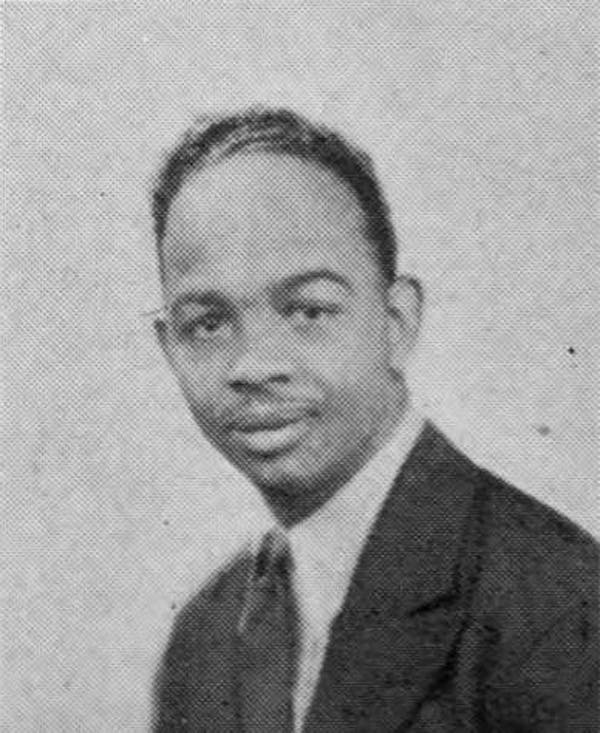
Hennepin County Library
Nelson Peery
Nelson Peery's 1942 senior yearbook photo at Central High School in Minneapolis. It was around this time that Peery enlisted in the Army and fought in World War II.
Hennepin County Library
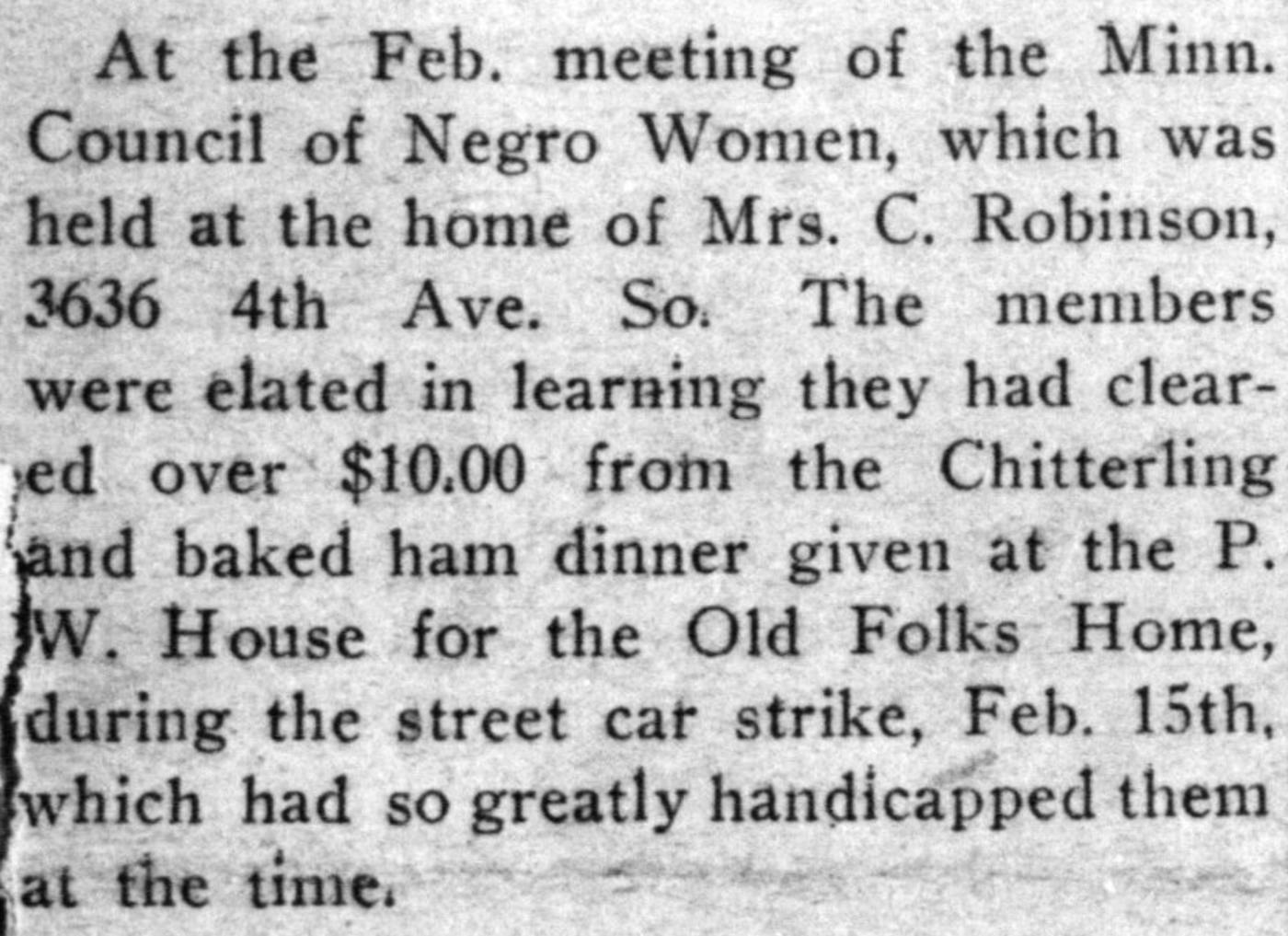
Twin-City Herald via Minnesota Historical Society
The Council of Negro Women
Clementine was involved with the Council of Negro Women and Order of the Eastern Star in the 1930s. This clip from 1938 describes a council meeting at Clementine's home.
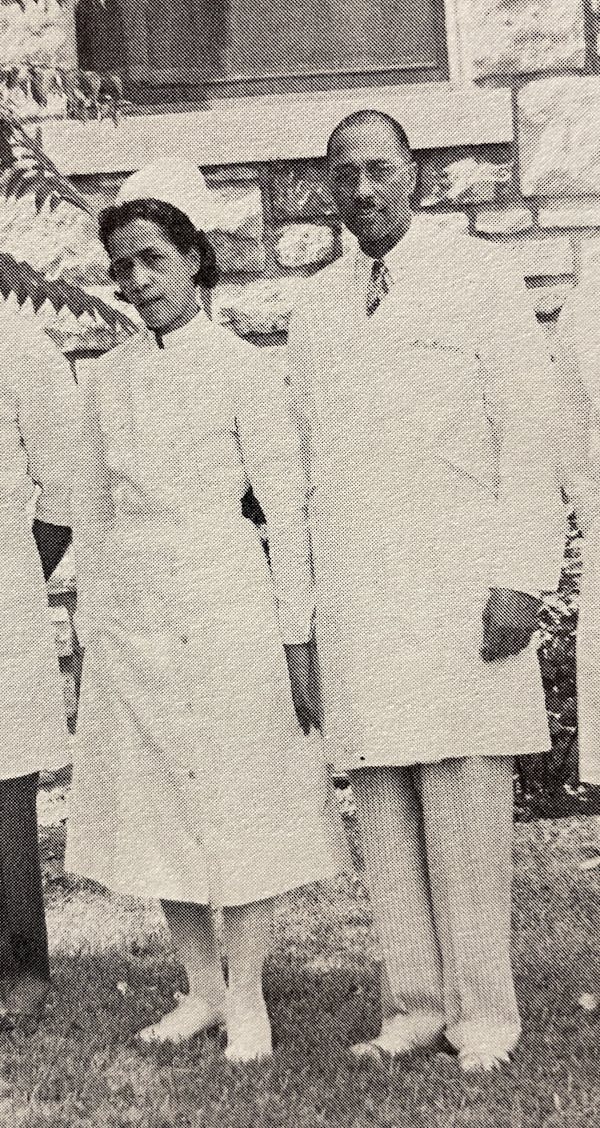
Black Archives of Mid-America
Clementine's successful siblings
Clementine's brother Gideon Brown was a well-known physician in Kansas City, Mo., and a leader in the city's Black hospitals. Clementine's sister Laura Washington was a prominent nurse. This undated photo of Laura and Gideon, likely taken outside Wheatley Provident Hospital, appeared in the book "Reaching for a Dream."
Black Archives of Mid-America

Minneapolis Spokesman / Minnesota Historical Society
Dr. Brown is welcomed to Minneapolis
Dr. Gideon Brown regularly traveled to Minnesota to study at the Mayo Clinic. The local Black community appears to have held him in high regard, as he was "almost continuously entertained." This clip from the Minneapolis Spokesman was published in August 1936.
Minneapolis Spokesman / Minnesota Historical Society

Minneapolis Spokesman via Minnesota Historical Society
Additional schooling
Clementine sought additional schooling in 1940. Later that decade, she would get a job as a nurse's aid at the University of Minnesota Hospitals. This clip appeared in the Minneapolis Spokesman in August 1940.
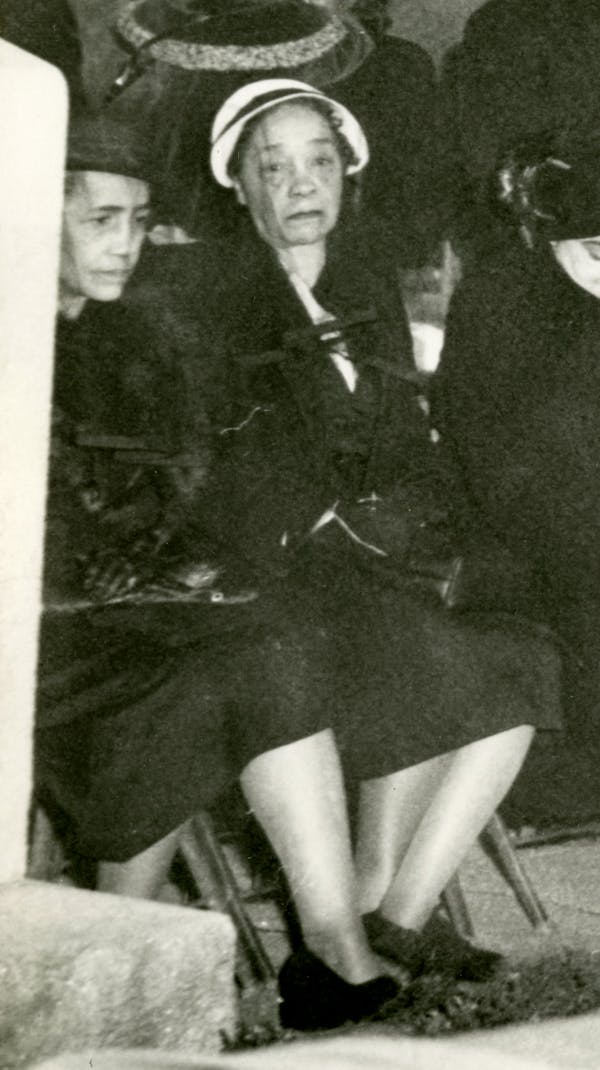
Black Archives of Mid-America, Matthew W. Washington Photograph Collection
Clementine mourns her brother
This image appears to show Clementine Robinson, center, and her sister Laura, left, at their brother Gideon's funeral in 1949.
Black Archives of Mid-America, Matthew W. Washington Photograph Collection
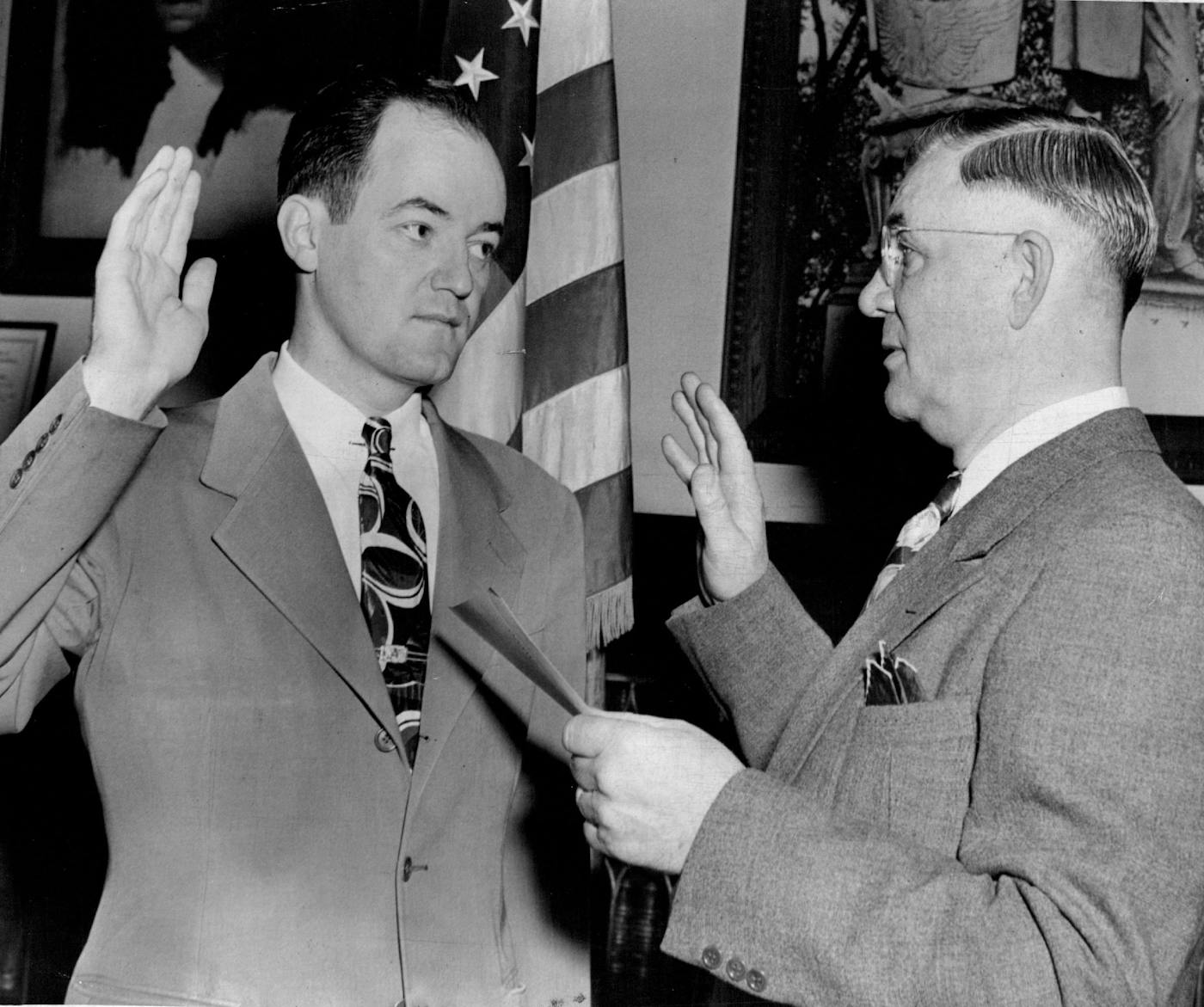
The Minnesota Star Tribune
Hubert Humphrey brings civil rights to City Hall
Hubert Humphrey was 34 years old when he became mayor in 1945, propelled in part by his pledges to advocate for civil rights. During his tenure, in 1947, Minneapolis became one of the first cities in the country to ban discrimination in employment.
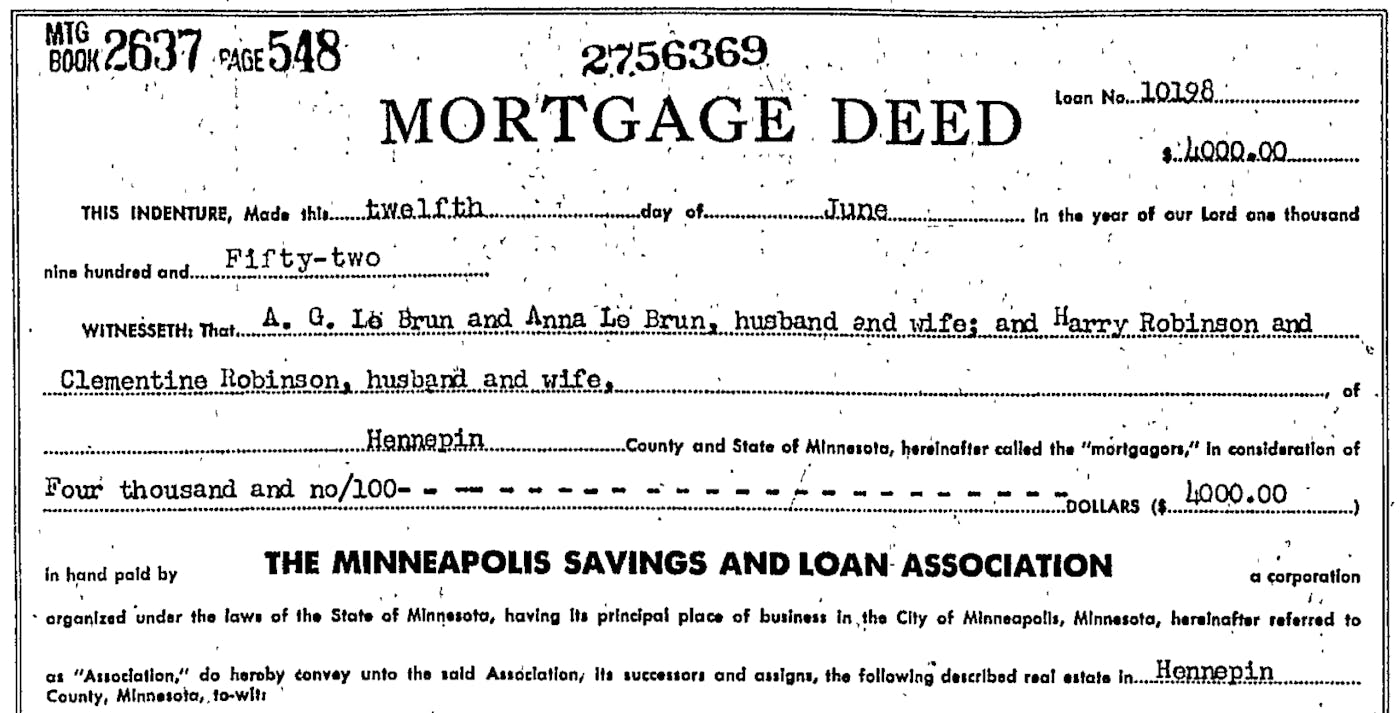
Hennepin County property records
A new home
The Robinsons bought a house in the Old Southside in 1952 with the help of the LeBrun family as co-signers on the mortgage. The LeBruns were the original occupants of the house and had lived there for roughly four decades.
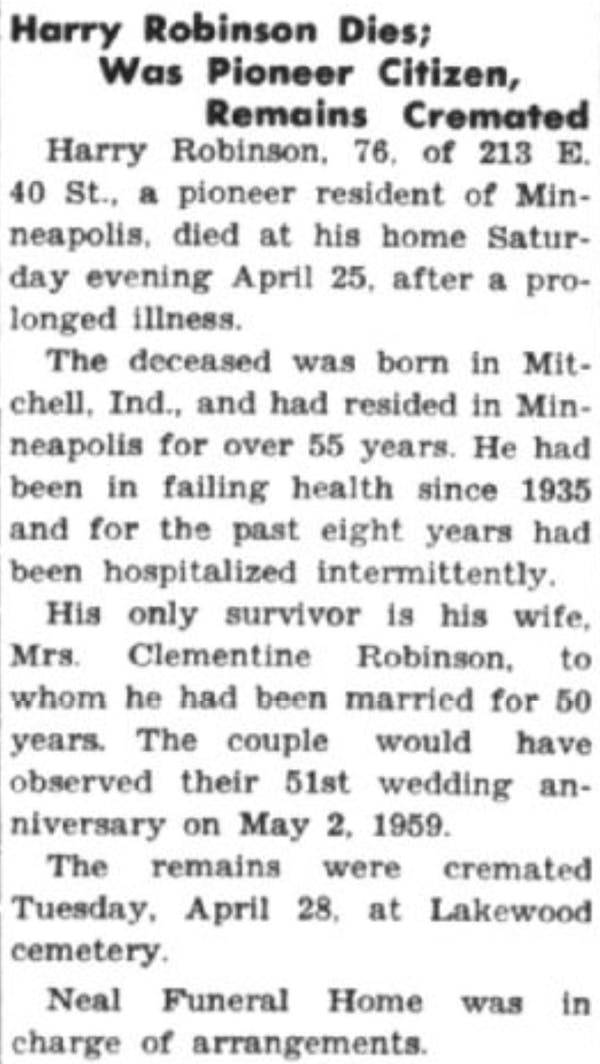
St. Paul Recorder / Minnesota Historical Society
A 'pioneer resident'
Harry Robinson died in 1959 at the age of 76. His obituaries in the Minneapolis Spokesman and St. Paul Recorder dubbed him a "pioneer resident," which seems to have been a nod to his arrival in the city before many other Black migrants.
St. Paul Recorder / Minnesota Historical Society
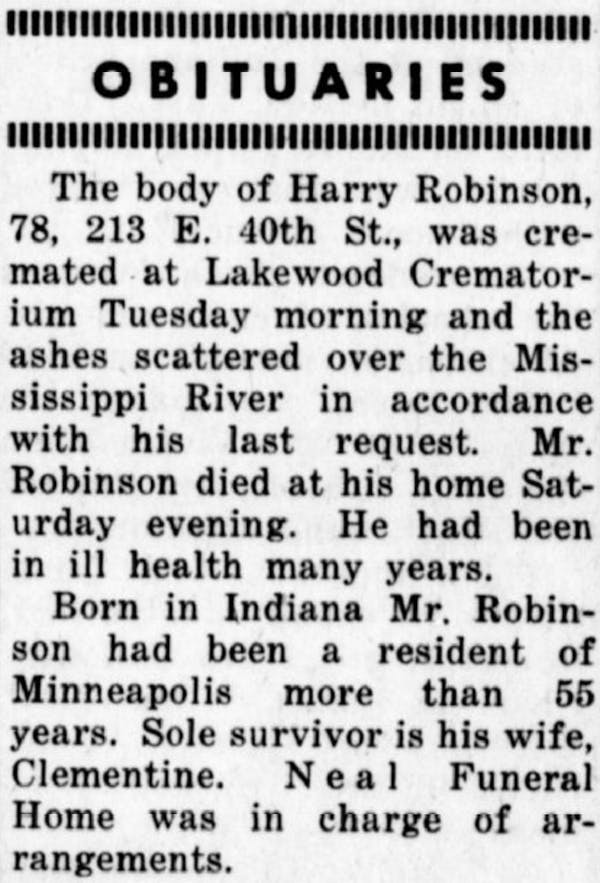
Twin City Observer / Minnesota Historical Society
Scattered ashes
Harry Robinson's final request was to have his ashes scattered over the Mississippi River, according to this article in the Twin City Observer, a Black newspaper.
Twin City Observer / Minnesota Historical Society

Carlos Gonzalez / The Minnesota Star Tribune
Greg McMoore
Greg McMoore grew up in south Minneapolis and chronicled his family's path to Minnesota in a project titled "Our North Star Journey." His work as a community historian is helping to keep memories of the Old Southside alive for future generations. This photograph was taken at a community launch event for "Ghost of a Chance" in January at Sabathani Community Center.
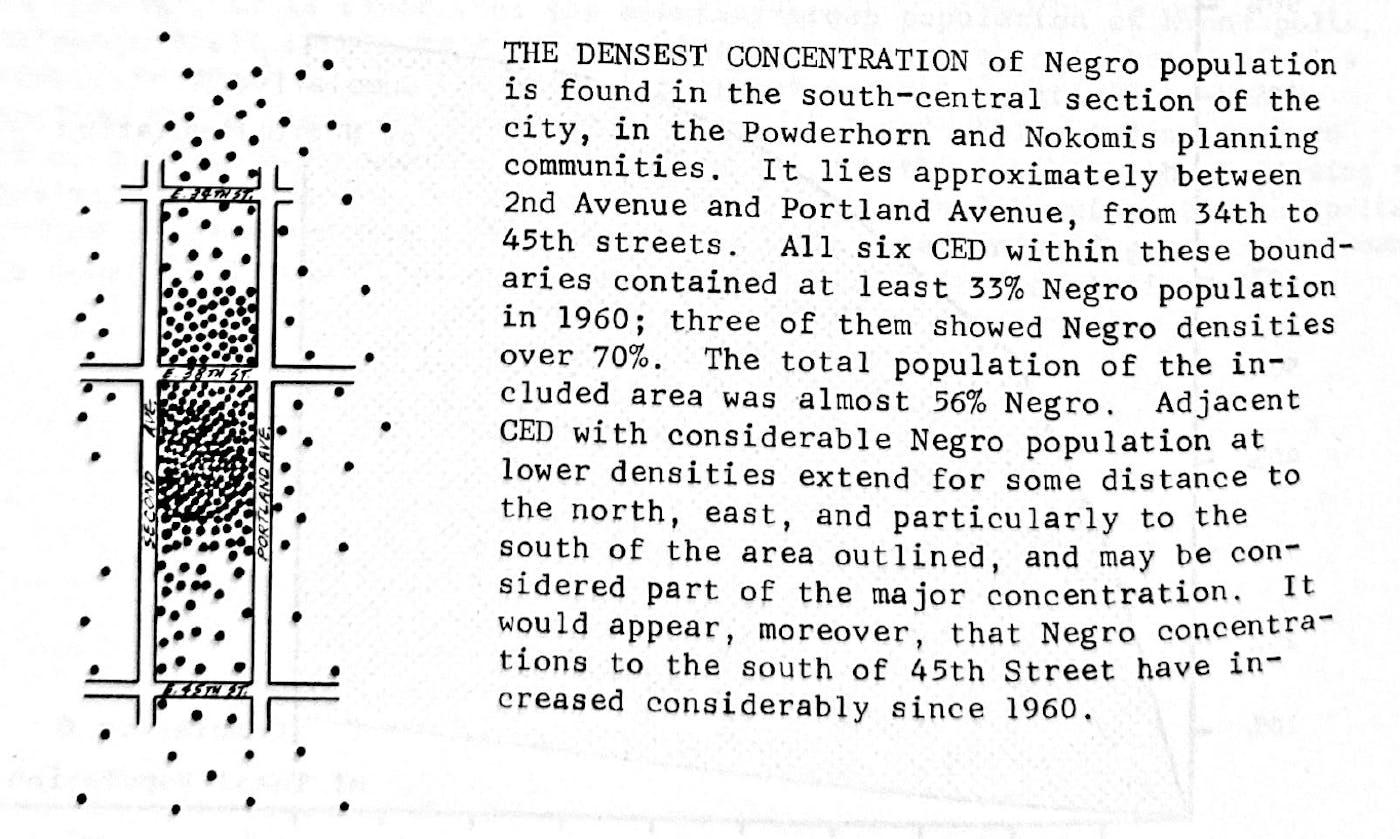
Hennepin County Library
The Old Southside stands out in 1966
A 1966 city report titled "Minority Housing Minneapolis" identified the Old Southside area (dubbed "Powderhorn-Nokomis") as the densest concentration of the city's Black population. The report says the Old Southside is a thriving place where Black homeownership rates are higher than in the city's average white neighborhood.
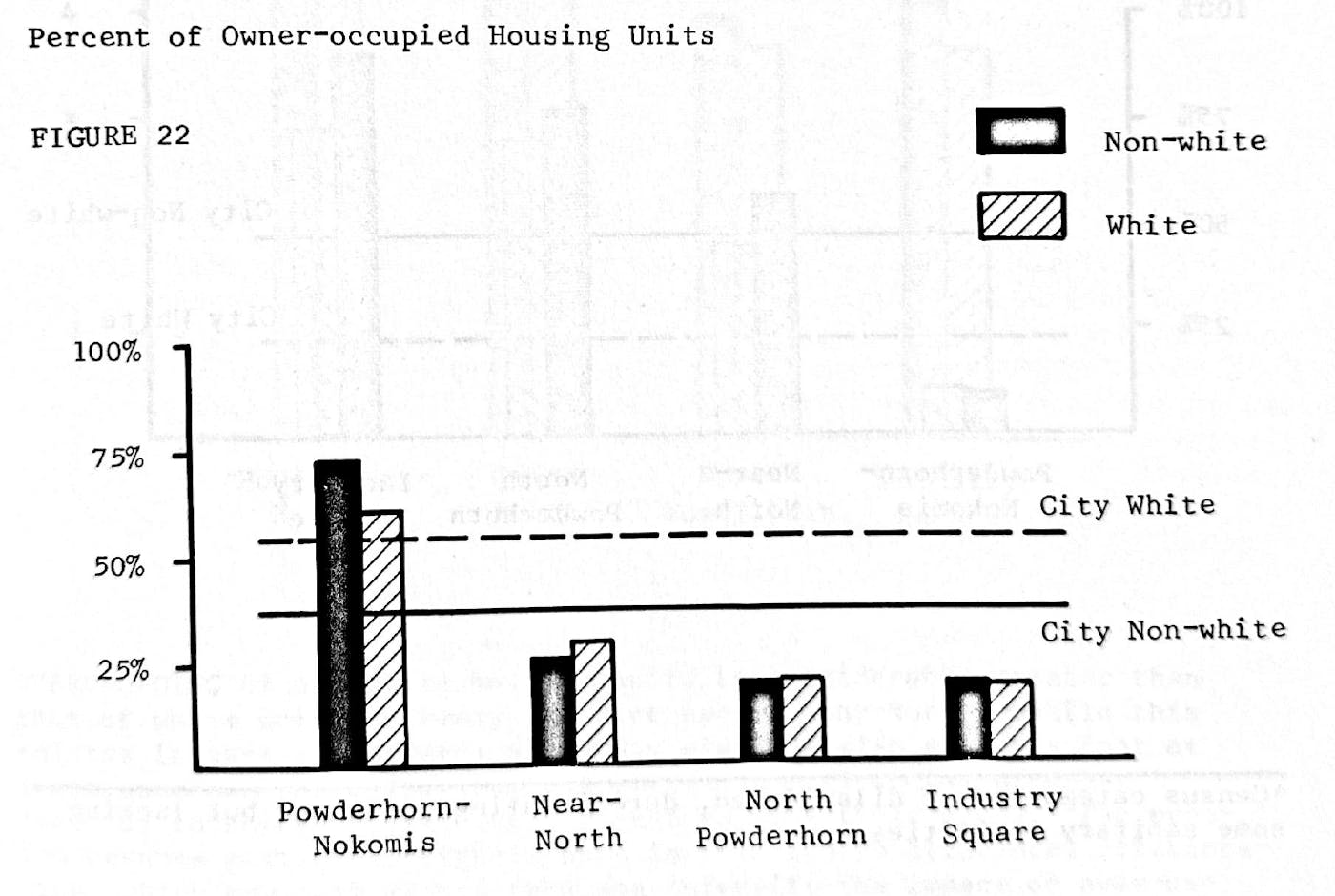
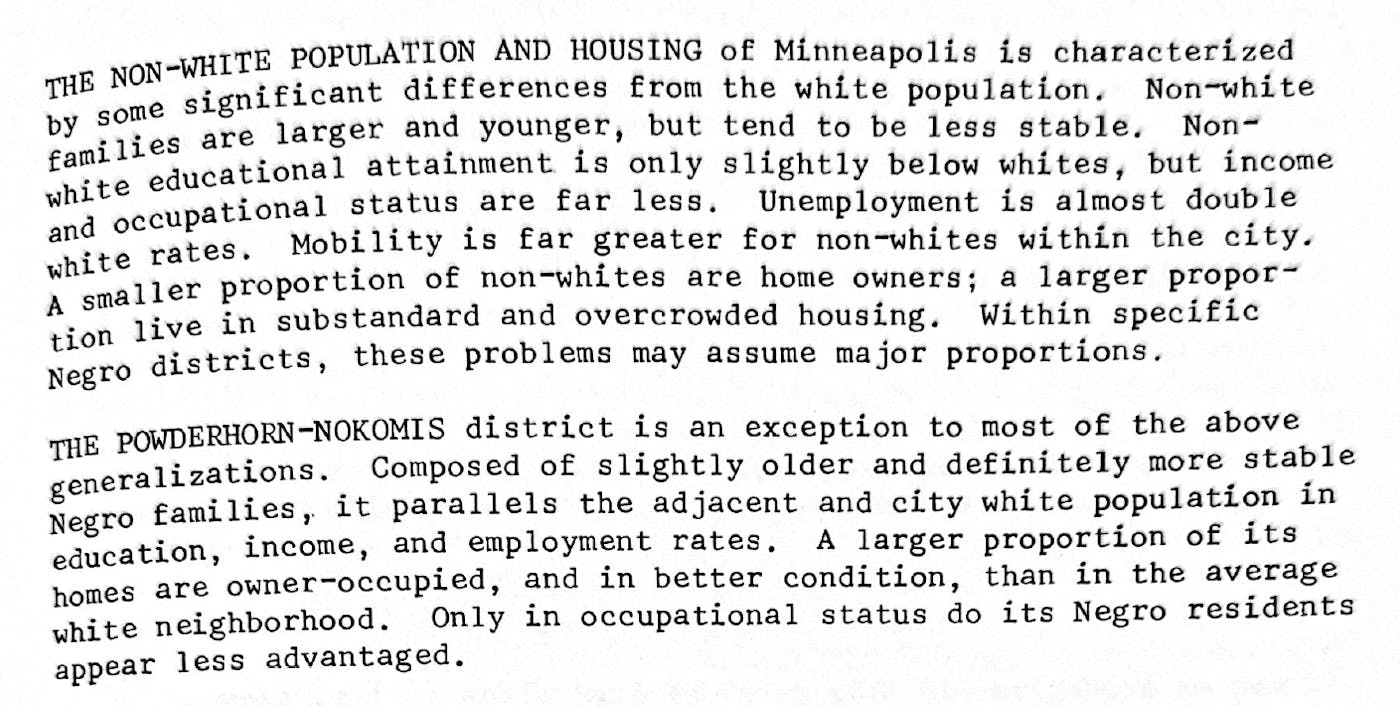
Special thanks to Hunter Woodall for scanning documents at the Library of Congress.
Credits
Reporter
Eric Roper
Writer and Producer
Melissa Townsend
Executive Producer
Jenni Pinkley
Editor
MaryJo Webster
Fact Checking
Eric Roper
MaryJo Webster
Sound Design
Marcel Malekebu
Legal Review
Randy Lebedoff
Contributing editors
Maria Reeve
Suki Dardarian
Catherine Preus
Research assistance
Mapping Prejudice at the University of Minnesota Libraries
Promotion
Casey Darnell
Amanda Anderson
Matt Gillmer
Art and design
Anna Boone
Brock Kaplan
Mike Rice
Carla Fabian
Tricia Peterson
Lauren Munro
Product Development
Jon Opacich
Sia Xiao
Paulie Hendrickson
Dan Eichholz
Sydney Lewis
Brian Ganas
Special thanks to
Kyndell Harkness, Zoë Jackson, Laura McCallum, James Shiffer, Nancy Yang, MaKayla Hart, Laura Yuen, Tane Danger, and members of the community who served as advisers